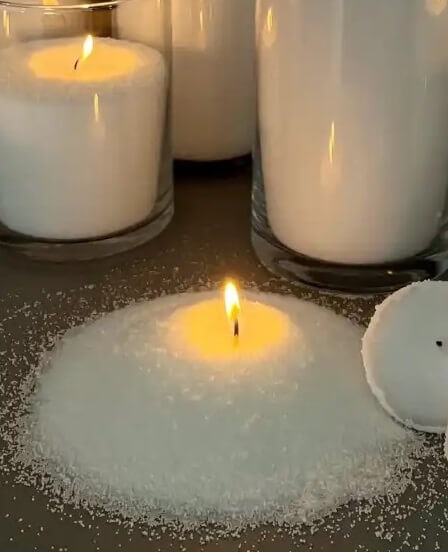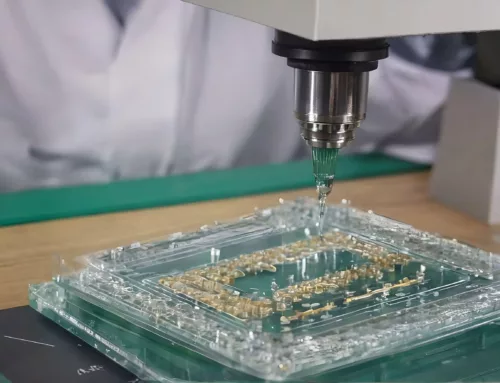
Woven through centuries of pagan and Christian traditions, the tapestry of Christmas conceals a scientific dimension. This article embarks on a scientific odyssey through the history of Christmas, unveiling the intricate dance of particles that contribute to the magic of the season. Christmas through the lens of Powder Technology.
The adoption of December 25th as the official date for Christmas by the Christian church in Rome in 336 AD marked a pivotal moment. This decision, influenced by the aim to Christianize the popular pagan festival of Saturnalia celebrated around the same time, was later officially designated as Christmas by Julius I, the newly appointed Bishop of Rome, in 337 AD. The choice of this date, also the birth date of the Sun god, may have held political motives during the reign
of Emperor Constantine, who had established Christianity as the effective religion of the Roman Empire, ruling over Europe and the Mediterranean with expansive reaches into different regions. From pagan festivals of the winter solstice to the Christian Nativity narrative, Christmas has evolved into a rich tapestry of traditions, blending cultural, religious, and secular influences.
Snow Globes and Powder Simulation
Within the paradigm of Christmas and powder technology, a captivating synthesis emerges in the enchanting world of snow globes. These cherished festive artifacts, prominently displayed during the holiday season, house a meticulously engineered powdered substance that replicates the mesmerizing spectacle of falling snow. To go deeper into the scientific intricacies of snow globe manufacturing, we analyze the evolution of powder formulations integral to creating the perfect snowfall illusion.
In the early versions of snow globes, simplicity in powder selection prevailed. Basic powders played a role in simulating snow, yet as the artistry advanced, contemporary renditions embraced better-suited materials. This evolution introduces a multidimensional enhancement, not only elevating the visual experience but also adding a tactile dimension to the snowy spectacle. Scientific precision dictates the delicate balance of particle size, density, and dispersion characteristics within these miniature winter wonderlands. Each particle, meticulously tailored for buoyancy and reflectivity, contributes to the enduring allure of the snow
globe’s magical snowfall. The synergy of advanced powder formulations and precise engineering coordinates a captivating visual inner domain, making these glass spheres not just decorative pieces but portals to an intricately designed snowy panorama.
Illuminating Candle-Making
The warm glow of candles, an integral part of the festive ambiance during Christmas, conceals a fascinating area of powder technology beneath their flickering flames. The production of candles unveils several powder-based processes, with an interplay of chemistry, manufacturing precision, and particle engineering. In the alchemy of candle-making, the formulation of wax is a nuanced process, demanding a careful consideration of specific melting points. This control over the chemical composition ensures optimal burning properties, contributing to both the functional and aesthetic aspects of candles. The fusion of wax and flame becomes a delicate dance orchestrated by the scientific balance within the powder technology employed therein.
Looking into the scientific nuances of candle production, a closer examination of particle sizes in waxes reveals a world of precision. The controlled manipulation of these particles is an important aspect, influencing the rate and consistency of wax combustion. The synergy of chemistry and powder technology not only ensures a steady burn but also enhances the overall efficiency and performance of the candle. The evolution of powdered pigments further elevates
the artistry of candle-making. Chemistry intertwines with manufacturing ingenuity as pigments are introduced to the wax, opening up a spectrum of colors. These powdered hues, carefully selected and dispersed, transform candles into visually stunning creations that become integral components of festive home decor. The scientific craftsmanship behind these pigments allows for the creation of candles that not only illuminate spaces but also serve as
captivating elements in the festive tapestry.
As we light candles during Christmas celebrations, we partake in an intricate interplay of chemistry and powder technology. The amalgamation of precisely formulated wax, strategically engineered particle sizes, and a vibrant palette of powdered pigments culminate in the creation of candles that contribute not only to the warmth of the season but also to the scientific artistry embedded in the
heart of festive traditions.

Glittering Particles in Christmas Decorations
The enchantment of Christmas is also magnified by the presence of glitter – those sparkling particles that bedeck ornaments, Christmas trees, wrapping paper, and holiday displays. In the world of powder technology, glitter unveils a captivating manufacturing process that goes into the microscopic world of particles, coatings, and light manipulation.
The foundation of glitter lies in the selection of the right particles, a process that extends beyond mere aesthetics. The science behind glitter begins with the careful consideration of particle sizes, a critical aspect that influences
the overall visual impact. Precision in size ensures that each particle reflects and refracts light consistently, contributing to the dazzling effect synonymous with glitter. However, the magic of glitter goes deeper as it involves the application of coatings to these minuscule particles. The manufacturing process unfolds with the layering of materials, often metallic or reflective, onto the selected particles. This coating not only enhances the light-reflecting properties but also adds dimension and durability to the glitter. The choice of coating materials plays an important role in achieving specific visual effects, from subtle glimmers to intense sparkles. Uniform dispersion is another element in the glitter manufacturing saga. The science of powder technology comes to the forefront as
manufacturers strive for even distribution of coated particles. Achieving this uniformity ensures that the glitter adheres seamlessly to surfaces, creating a consistent and radiant appearance in Christmas decorations.
If it were up to the elves, the manufacturing process, intricate in its precision, would result in glitter, that transcends mere ornamentation. Each glittering particle becomes a masterstroke of science, reflecting the interplay of particle engineering, material science, and the physics of
light. The dazzling effect produced by glitter is not merely a product of chance but a deliberate orchestration of particles designed to capture and amplify the festive spirit.
Pigments and Colorful Ornamentation
We also have the dazzling array of vibrant colors adorning Christmas ornaments, tracing its brilliance to an intricate dance of science and artistry. This chromatic spectacle is achieved through the selection and application of powdered pigments, each particle contributing to the festive visual symphony. Scientifically speaking, pigments are not merely hues in isolation; they are finely ground particles dispersed within materials.
This dispersion is a carefully calculated process, where the size of each particle plays an important role in determining the final color outcome. Understanding the science of pigments unveils the alchemy that transpires when these particles interact with light, absorbing certain wavelengths and reflecting others to create the kaleidoscope of colors that defines Christmas ornamentation. The longevity and vibrancy of Christmas ornaments hinge upon the scientific mastery behind these pigments. The in-depth control of particle size is paramount, as it governs the interaction of
pigments with light and influences the saturation and brilliance of each hue. In this intricate process, the science of particle dispersion also comes into play, ensuring uniformity in the arrangement of pigments within the material.
As we look into the science of pigments, we gain a profound appreciation for the enduring symbols of holiday cheer – the festive reds, greens, and golds that characterize Christmas ornaments. The controlled dispersion of powdered pigments within these materials ensures that the colors withstand the test of
time, resisting fading and maintaining their vibrancy over the years.
Artificial Snow and Powdered Coatings
And who does not associate Christmas with snow? The enchantment of a winter wonderland, even in regions where snowfall is a rarity, is made possible through the scientific intricacies of artificial snow production. This technological feat involves a sophisticated application of powder technology, specifically in the domain of powdered coatings, to recreate the appearance and texture of natural snow. Artificial snow production commences with the utilization of specialized powders designed for their unique characteristics. These powders, often in the form of finely engineered particles, serve as the foundation for creating a remarkably realistic snow-like effect. The scientific precision behind these powders ensures not only visual fidelity but also tactile authenticity, mimicking the delicate texture of natural snow.
In the application process, these specialized powders transform into spray-on coatings that adhere to surfaces with remarkable precision. The deployment of powder technology in this context is akin to an artistic brushstroke, where each particle contributes to the overall illusion of a winter landscape. The controlled dispersion and adherence of these powders become relevant in achieving an even and convincing coating, avoiding clumping or irregularities that may compromise the realism of the artificial snow. Analyzing the evolution of technologies in artificial snow production shows us a fascinating journey marked by the relentless pursuit of realism. Scientists and engineers continuously refine the characteristics of powdered coatings, seeking improvements in texture, durability, and visual authenticity. The goal is to create artificial snow that not only looks the part but also behaves like natural snow, responding to environmental factors such as temperature and humidity.

The application of powder technology in artificial snow is not merely a surface-level endeavor. It’s a nuanced exploration of particle science, material engineering, and surface interactions. As these technologies evolve, they contribute a layer of authenticity to seasonal displays, transcending the conventional boundaries of decoration.
The winter magic infused into Christmas settings by artificial snow is a testament to the scientific dedication to replicating the beauty of the natural world, enriching the holiday experience for all.
Powdered Delights of Christmas Cuisine
During this season, we also delve into the culinary enchantment of Christmas—a symphony of flavors and textures where powdered ingredients play a central role in creating festive recipes. From powdered spices that evoke warmth and aroma to finely milled flours that form the foundation of delectable treats, the scientific precision involved in the grinding and milling process significantly influences the culinary delights of the season. Scientifically speaking, the grinding and milling of powdered ingredients constitute a delicate dance of particle manipulation, where each fragment contributes to the sensory symphony of Christmas treats. Take, for instance, the aromatic experience of powdered spices – the grinding process unlocks their volatile
compounds, releasing a bouquet of scents that infuse depth and warmth into holiday dishes. The particle size, carefully controlled during grinding, plays an important role in determining the intensity of flavors, ensuring a harmonious balance that delights the palate. In the world of powdered sugars, the meticulous milling process defines the texture and sweetness of Christmas confections. The controlled manipulation of particle sizes ensures the even distribution of sweetness, avoiding clumping and contributing to the smoothness of batters and icings. The result is a sensory experience that transcends taste alone, involving the subtle play of textures that elevate holiday treats to a realm of culinary delight. The finely milled flours, the backbone of many Christmas recipes, undergo a similar scientific analysis. The grinding process determines the particle sizes that, when combined with other ingredients, yield the
desired texture in baked goods. The controlled manipulation of these flour particles is not just about consistency; it’s a nuanced pursuit of achieving the perfect crumb, tenderness, and structure in festive treats. The science of particle manipulation in the culinary arena extends beyond precision; it is an artistry that enhances the overall sensory experience of holiday delicacies. Each powdered ingredient, meticulously ground or milled, contributes to a harmonious composition of tastes and textures that define the essence of Christmas culinary traditions. As we savor these festive delights, we unknowingly partake in a scientific gastronomic journey, appreciating the subtle yet impactful role of powdered ingredients in the creation of holiday magic and our weight.
Unwrapping the Scientific Mystique of Christmas
Finally, while unwrapping the scientific mystique of Christmas, we have realized a world where particles dance to the festive melody. From the simulated snowfall within glass globes to the vibrant hues of ornaments, the scientific principles of powder technology are intricately woven into the fabric of holiday traditions. As we celebrate the magic of Christmas, let us not only revel in the joy of the season but also marvel at the scientific ballet of particles that enhances our festive experience and the gifts that come under the tree
So, this Christmas, take a moment to appreciate the silent but significant role of particles in creating the magical ambiance we hold so dear.




